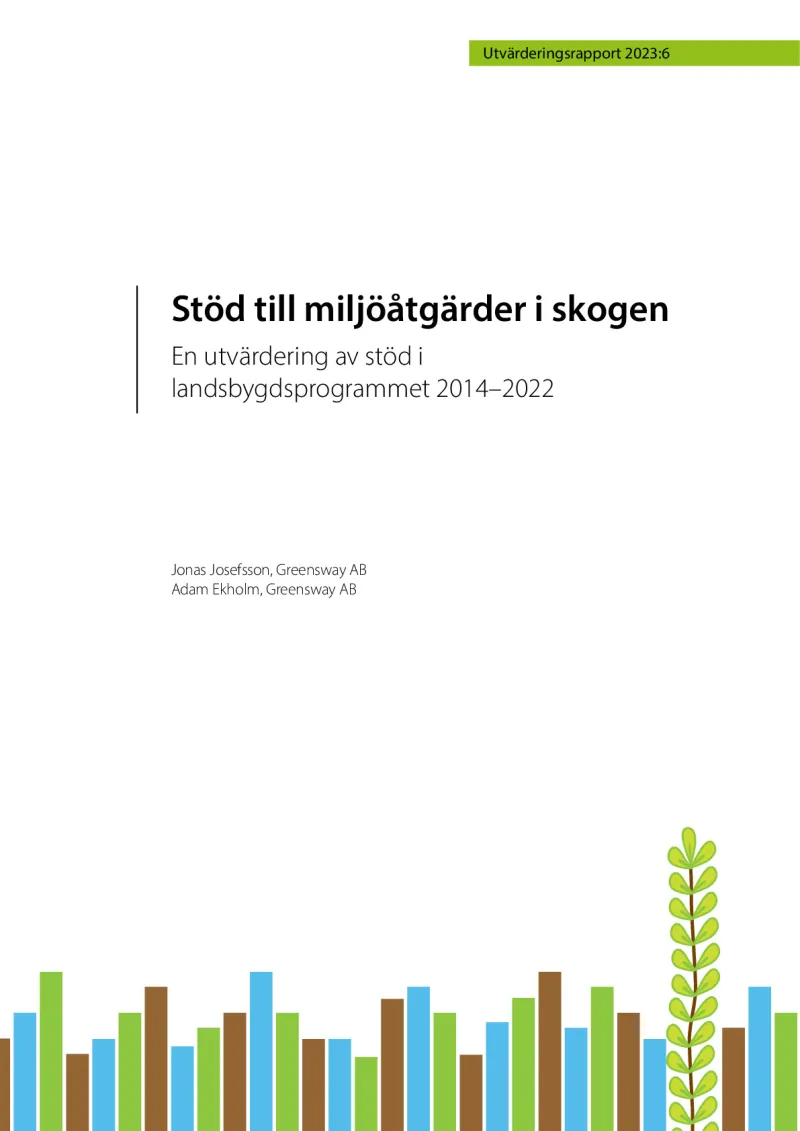Swedish support for environmental measures in forests
Through a theory-based approach, the report examines the environmental effects on forests the Rural Development Programme (RDP) has had and how effective this support has been, with a particular focus on biodiversity.
- Sweden
- 2014-2022
- Environmental impacts


The evaluation is part of the final evaluation of the RDP. Specifically, it contributes to the answer to two common EU evaluation questions (CEQ): CEQ8 (on restoration, conservation and enhancement of biodiversity) and CEQ26 (on environmental improvement and biodiversity strategy objectives), as regards the forestry aspects of the Swedish RDP. The report aimed to assess the environmental impact and effectiveness of the RDP support during the 2014-2022 programming period, with a particular focus on biodiversity and biological heritage. The focus of the evaluation is on Focus Area 4a which aims to restore, conserve and enhance biodiversity, including in Natura 2000 areas but also other areas facing natural or specific constraints. The evaluation is based on a theory-based approach. The evaluation method involves a combination of studies that test both the theoretical durability of the design and execution of the support: an analysis of support data, a review of scientific literature and interviews with support managers and advisors within the support scheme.
In order to fulfil the purpose, the evaluation answers the following questions:
- What impact has the support scheme 'Forest Environmental Values' had on the forest's cultural and natural environment, in particular with regard to biodiversity, but also on biological heritage?
- To what extent has the support for the environmental values of forests been effective?
- How can future forest support and measures be designed in a way that increases the effectiveness of support?
The limiting factors include the sample size required to reach a good general perspective as well as the difficulty of finding forest owners willing to be interviewed. The measures supported under the Forest Environmental Values support are effective in contributing to biodiversity. However, in the absence of the necessary quantitative data, it is not possible to demonstrate any actual effects of the support. At the same time, the forest area covered by the support is small, which means that the contribution of the support is limited when it comes to the long-term conservation of species living in forests. The support scheme has had a good distribution over Sweden and over different types of landowners in terms of gender, age and existing knowledge of, and interest in nature conservation. However, the uptake of measures for forest wetlands and the clearing of stone walls is low. The design of the support, with area-based payments and a simplified application process, has been positive for the interest in applying for the support. Moreover, the sectoral division between forest and agriculture and the demarcation between forest and agricultural land have resulted in difficulties in reaching certain environments, such as forest pastures.
Author(s)
Jonas Josefsson, Greensway, Adam Ekholm, Greensway (AB)